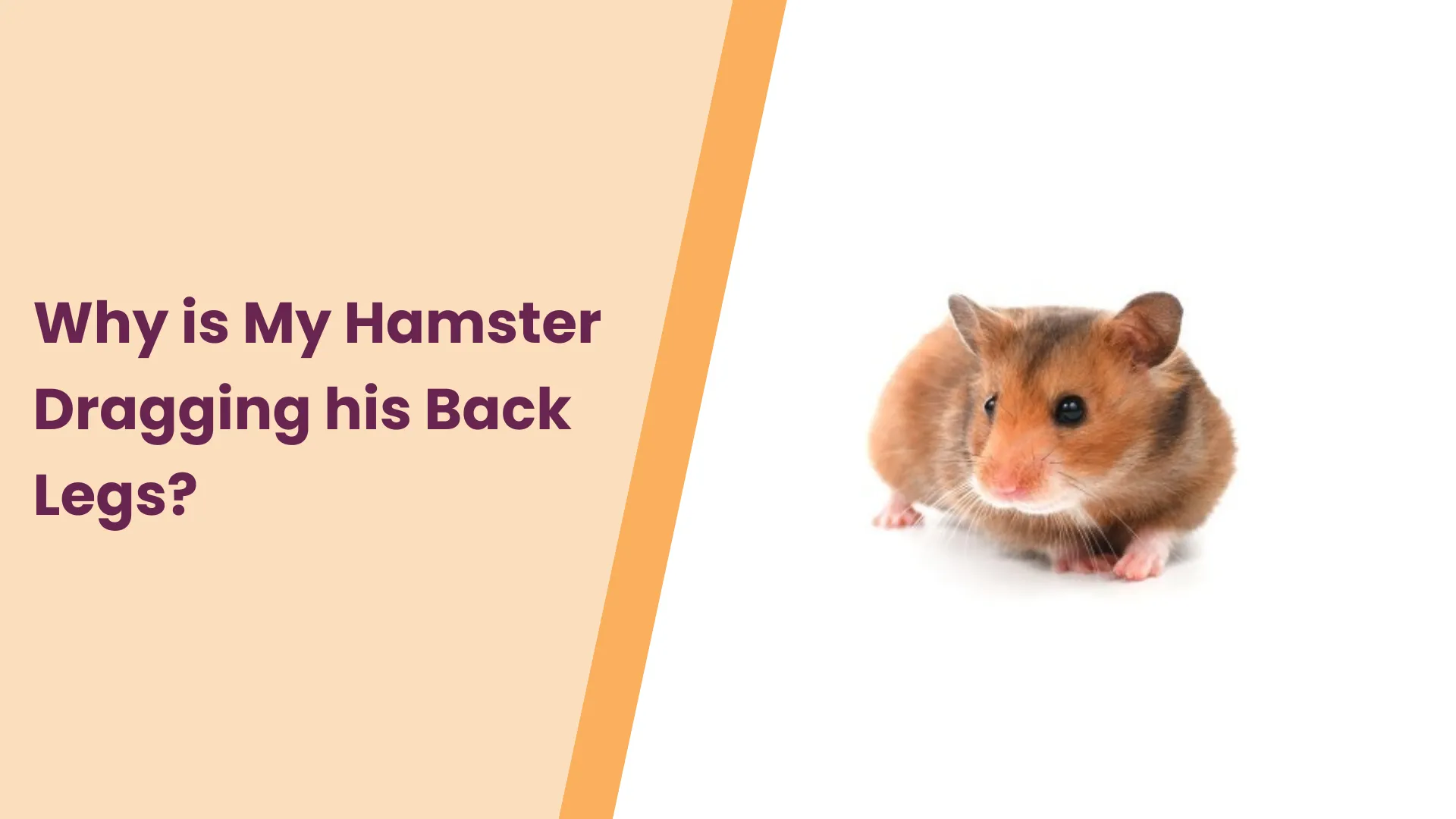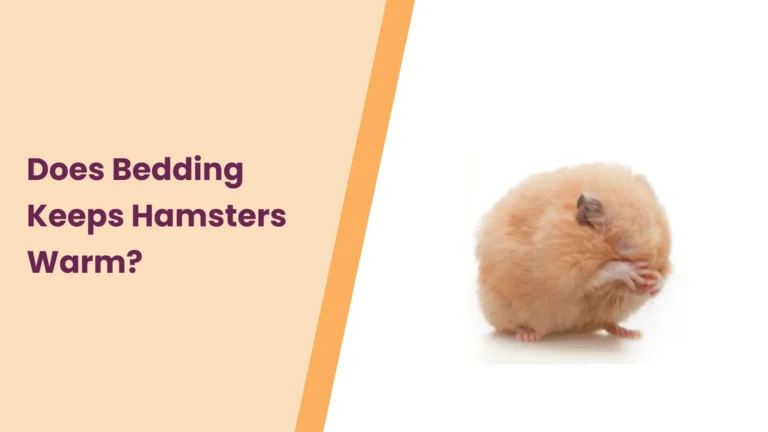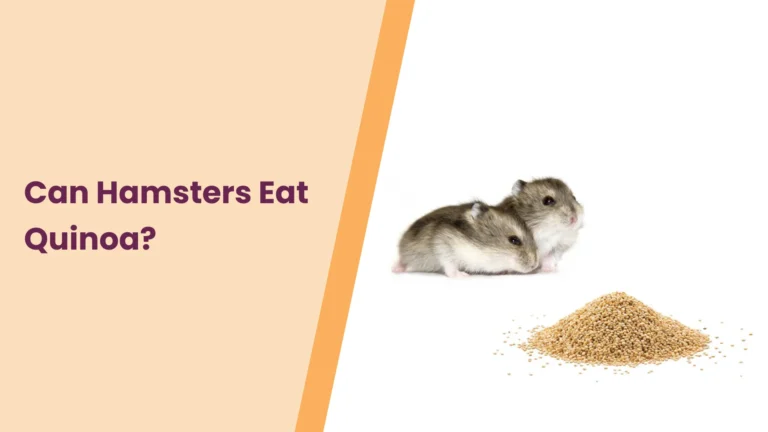Why is My Hamster Dragging his Back Legs?
Ever caught yourself watching your furry friend, only to notice an unexpected behavior – your hamster dragging his back legs? It’s a moment that tugs at the heartstrings of every caring hamster owner. We understand the worry and confusion that can arise when our beloved pets exhibit signs of discomfort. Fear not, as we embark on a journey to demystify the reasons behind this peculiar behavior.
In this guide, we’ll explore common causes, subtle signs to watch for, and practical steps you can take to ensure your hamster’s well-being. Let’s delve into the world of hamster care, shedding light on why your tiny companion might be navigating the wheels of life with a little extra challenge.
Common Causes
1. Injury or Trauma:
Accidents can happen, even in the cozy haven you’ve created for your hamster. A sudden fall or a misadventure off an obstacle might result in injuries, manifesting as the curious sight of your hamster dragging his back legs. To create a hamster haven that minimizes risks, consider placing soft bedding at the base of their cage and ensuring there are no precarious ledges. Think of it as creating a safety net for their tiny acrobatic adventures.
2. Obesity:
Just like us, hamsters can struggle with the consequences of carrying a few extra grams. Obesity in hamsters isn’t just about appearance; it can affect their mobility, leading to leg-dragging behavior. Addressing this concern involves a careful reassessment of their diet. Opt for a well-balanced hamster-friendly menu, rich in nutrients and low in high-calorie treats. Remember, a healthy hamster is a happy hamster, scampering effortlessly in their play area.
3. Neurological Issues:
The intricacies of a hamster’s nervous system can sometimes lead to neurological conditions affecting their leg coordination. While it’s a more complex aspect, paying attention to subtle signs and seeking professional guidance is crucial. Your veterinarian can conduct examinations to pinpoint any neurological issues, ensuring your hamster receives the care tailored to their unique needs.
Understanding these common causes provides a foundation for deciphering the mystery behind your hamster’s leg-dragging antics. Stay tuned as we explore signs and symptoms to watch for in the next section.
Signs and Symptoms
1. Observational Clues:
Understanding your hamster’s behavior is like deciphering a tiny, fuzzy code. When it comes to leg dragging, observe their movements closely. Do they hesitate before taking steps? Is there a noticeable change in their gait? A keen eye for these subtle cues can be your hamster’s way of communicating discomfort. Remember, you’re the guardian of their well-being, and being attuned to these observations can be the key to early intervention.
2. Pain Indicators:
Hamsters, despite their small size, have a unique way of expressing pain. Listen closely for any unusual vocalizations or squeaks. Changes in their usual activities or a reluctance to engage in play might also signal discomfort. As caring hamster owners, it’s essential to recognize these pain indicators and respond promptly. A little extra attention and a visit to the vet can make all the difference in ensuring your furry friend’s happiness.
Deciphering these signs and symptoms is like unraveling the language of your hamster’s health. In the next section, we’ll explore practical home care tips to support your hamster’s comfort and well-being. Stay tuned for valuable insights on creating a hamster haven tailored to their needs.
Home Care Tips

1. Cage Modification:
Transform your hamster’s living space into a haven that accommodates their unique needs. Consider adding ramps to help them navigate different levels of their cage effortlessly. Opt for platforms and cozy hideouts strategically placed to minimize the need for extensive climbing. Soft bedding, such as shredded paper or hay, provides a gentle landing, reducing the impact on their delicate limbs. Creating a modified environment shows your commitment to their well-being, ensuring a safe and comfortable home.
2. Dietary Adjustments:
The path to a healthier, more mobile hamster often begins with their diet. Consider reevaluating their food choices, opting for a balanced mix of high-quality pellets, fresh vegetables, and occasional fruit treats. Introduce foods rich in joint-supporting nutrients, such as leafy greens and vegetables. Consult your veterinarian for a personalized diet plan that addresses your hamster’s specific needs, promoting overall health and weight management.
Taking these home care steps not only enhances your hamster’s quality of life but also fosters a stronger bond between you and your tiny companion. In the upcoming section, we’ll discuss the importance of seeking professional veterinary assistance and the steps involved in the diagnostic process. Stay with us as we navigate the path to ensuring your hamster’s optimal health.
Seeking Veterinary Assistance
1. Timely Intervention:
When it comes to your hamster’s health, time is of the essence. If you notice any signs of leg dragging or discomfort, don’t hesitate to reach out to a knowledgeable veterinarian. Early intervention can significantly impact the prognosis, potentially preventing further complications. Your swift action reflects your commitment to providing the best possible care for your furry friend.
2. Diagnostic Process:
Navigating the intricacies of your hamster’s health requires the expertise of a seasoned veterinarian. During a consultation, expect a thorough examination to pinpoint the root cause of the leg dragging. This may involve X-rays, blood tests, or other diagnostic procedures tailored to your hamster’s unique situation. Understanding the diagnostic process empowers you as a responsible pet owner, ensuring informed decisions and a comprehensive approach to your hamster’s well-being.
Remember, your hamster’s health is a collaborative effort between you and your veterinarian. As we conclude our exploration into the world of hamster care, we encourage you to prioritize regular veterinary check-ups and ongoing communication with your pet healthcare provider. Your dedication ensures a life of comfort and joy for your cherished hamster companion.
Conclusion
In unraveling the mystery behind your hamster’s leg dragging, remember that attentive care is the key to a happy and healthy companion. Whether it’s creating a modified cage environment, adjusting their diet, or seeking timely veterinary assistance, your dedication makes all the difference. As responsible hamster parents, staying attuned to subtle signs and acting promptly ensures your furry friend enjoys a life full of joy and comfort.
Embrace the journey of understanding and supporting your hamster’s unique needs. Regular veterinary check-ups, a balanced diet, and a nurturing environment form the foundation of a thriving partnership with your tiny companion. Together, let’s continue fostering a bond that transcends size, making every moment with your hamster a cherished one.
Thank you for entrusting us with your hamster care journey. Share your experiences, ask questions, and let’s continue nurturing a community that celebrates the well-being of our delightful hamster friends.
“Your insights and experiences as hamster enthusiasts are invaluable to our community. Share your thoughts, questions, or personal stories in the comments section below. Let’s create a space where knowledge flows freely, benefiting both seasoned hamster caretakers and those embarking on this adorable journey. Your input may be the key to helping another hamster parent facing similar questions.
Don’t forget to spread the love—share this post on your favorite social platforms, extending our hamster care wisdom to a broader audience. Together, let’s build a supportive hub for hamster lovers, fostering a network that celebrates the joys and challenges of caring for these lovable tiny companions. Thank you for being part of our hamster care family!”–HamsterPit







